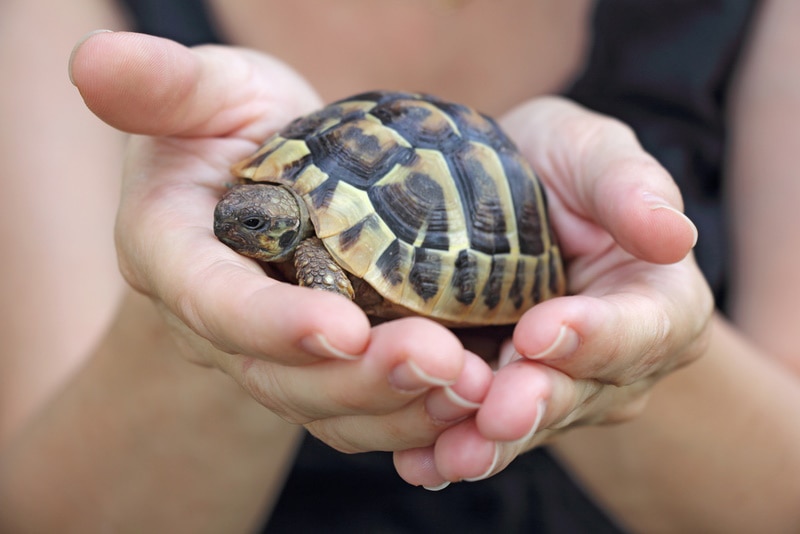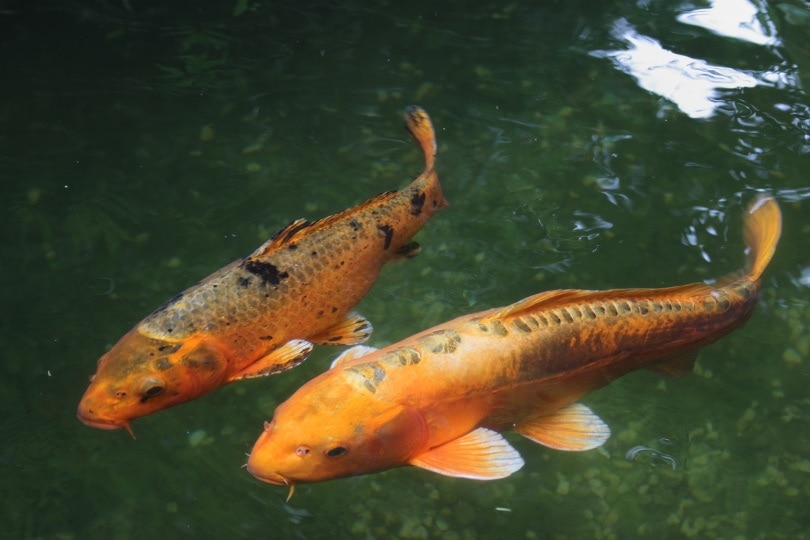15 Low-Maintenance Freshwater Fish for Beginners (With Pictures)
Updated on
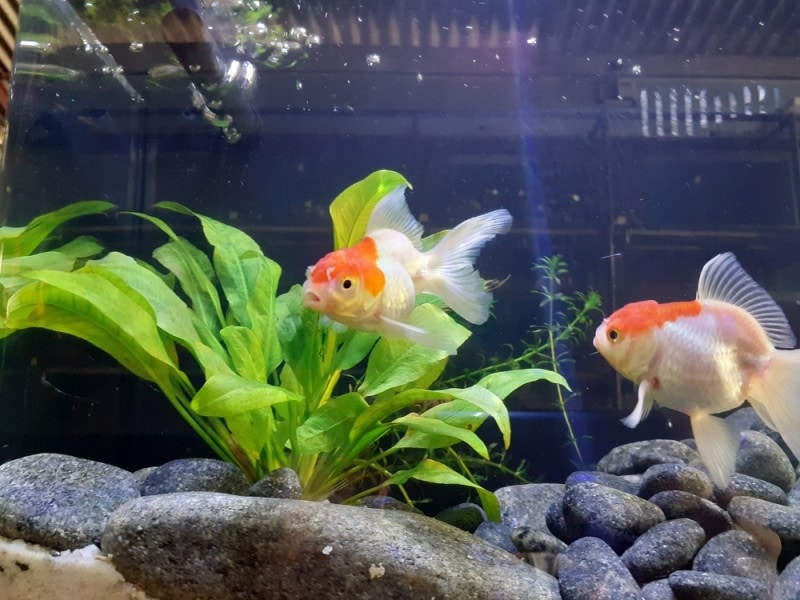
Click to Skip Ahead
Entering the world of fishkeeping can be an overwhelming experience, and it’s always a good idea to start with low-maintenance fish. Choosing a beginner-friendly fish to start with can help reduce some of the anxiety associated with starting with fish-keeping. Low-maintenance fish tend to be hardy types of fish that are more forgiving of beginner’s mistakes than some other types of fish are.
What Should You Know Before Bringing Home Any Fish
The biggest mistake that beginners make is not understanding tank cycling before bringing home any fish. Cycling a tank establishes colonies of beneficial bacteria that control the ammonia and nitrite levels within the tank, converting them to less toxic nitrate. Performing a tank cycle without fish in the tank is easier and safer than performing a fish-in cycle.
Even the hardiest fish are susceptible to the negative effects of high levels of ammonia and nitrites, including lethargy, scale and fin damage, and death. Fully cycling a tank before bringing any fish home will make the transition easier on your fish and help you start your tank off without issues. Be prepared to take at least a few weeks to ensure your tank is fully cycled before bringing your fish home.
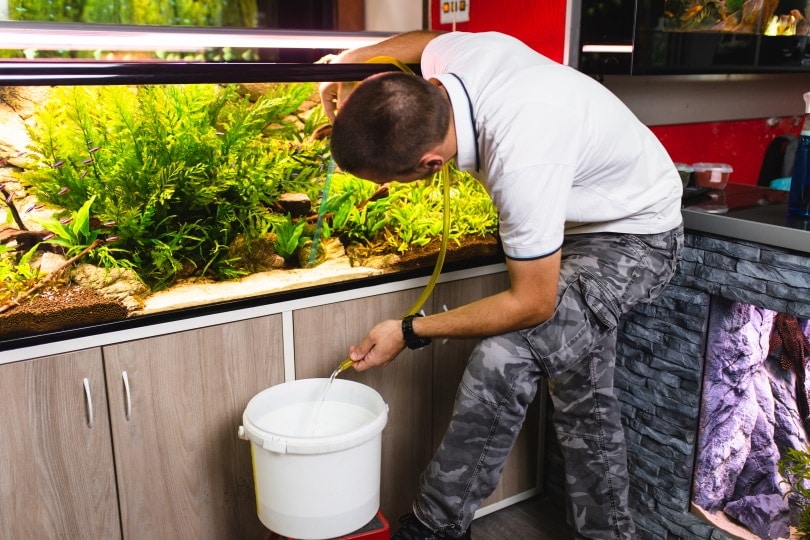
15 Low-Maintenance Freshwater Fish for Beginners
1. Betta Fish
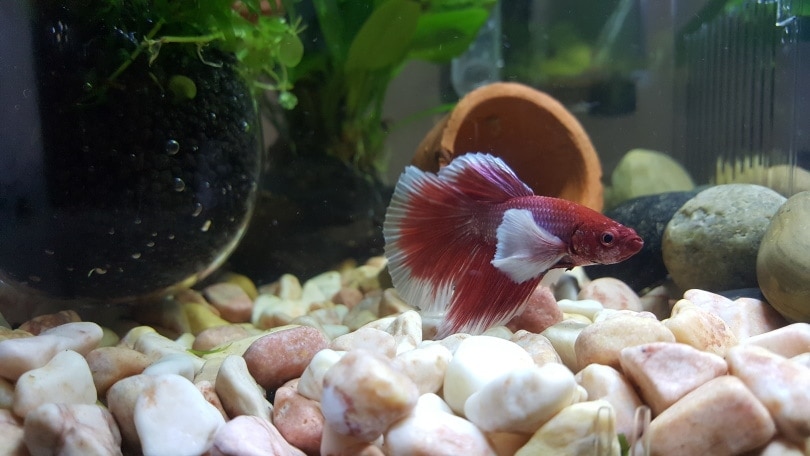
Betta fish are one of the most popular freshwater fish due to their low-maintenance nature and flowing, colorful fins. They have a labyrinth organ, which allows them to breathe surface air in low-oxygen environments. They have simple feeding requirements and will be happy in a tank with plants, a heater, and plenty of space to swim.
It’s generally recommended to keep male Bettas alone in a tank that is 5 gallons or larger. Females can sometimes be kept with other fish, but this isn’t advisable for beginners to attempt.
2. Guppies
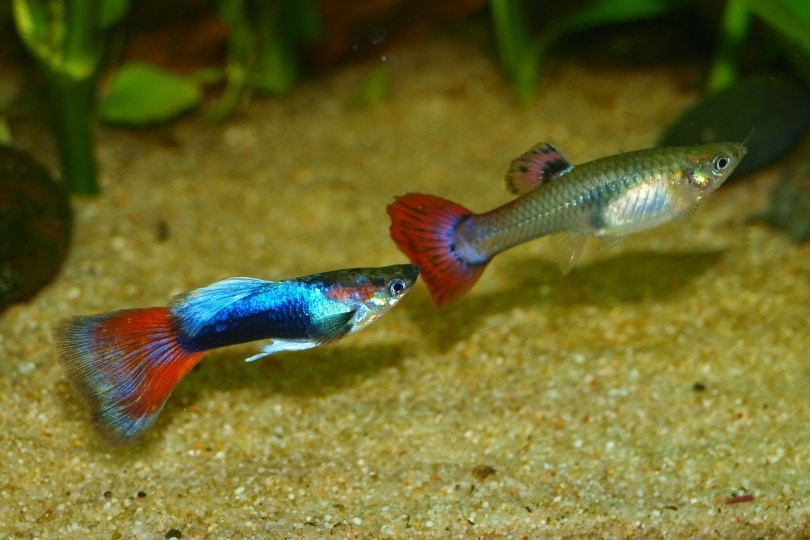
These little livebearers are one of the most prolific breeders in home freshwater aquariums. They are brightly colored, active, can survive in poor water quality, and have simple environmental needs. It’s important to provide plenty of plant cover to ensure the survival of your Guppy fry.
Guppies have been inbred to achieve specialty colors and patterns, and it isn’t uncommon for them to be sickly when coming from pet stores. However, once they settle into a new environment, they’re remarkably hardy fish.
3. Mollies
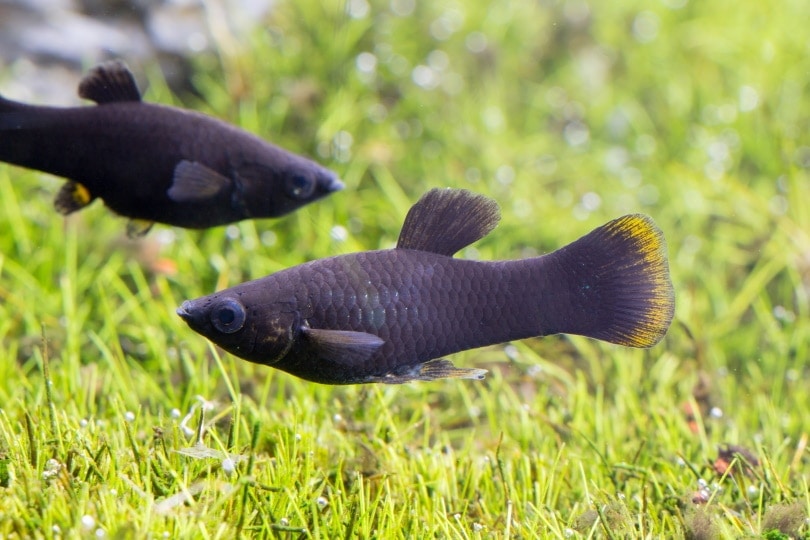
Another type of livebearer, Mollies are larger and more full-bodied than the more streamlined Guppy. They do reproduce readily, though, and are happy in most freshwater tank environments. There are multiple specialty varieties of Mollies, making them highly variable in colors and patterns, allowing you to choose an interesting variety to suit your tank.
Mollies are sexually dimorphic, which means there are visible differences between males and females. This can allow you to keep an all-female or all-male tank to prevent reproduction. Just be aware that if you keep females, there’s a good chance at least one female you purchase is already pregnant.
4. Platies
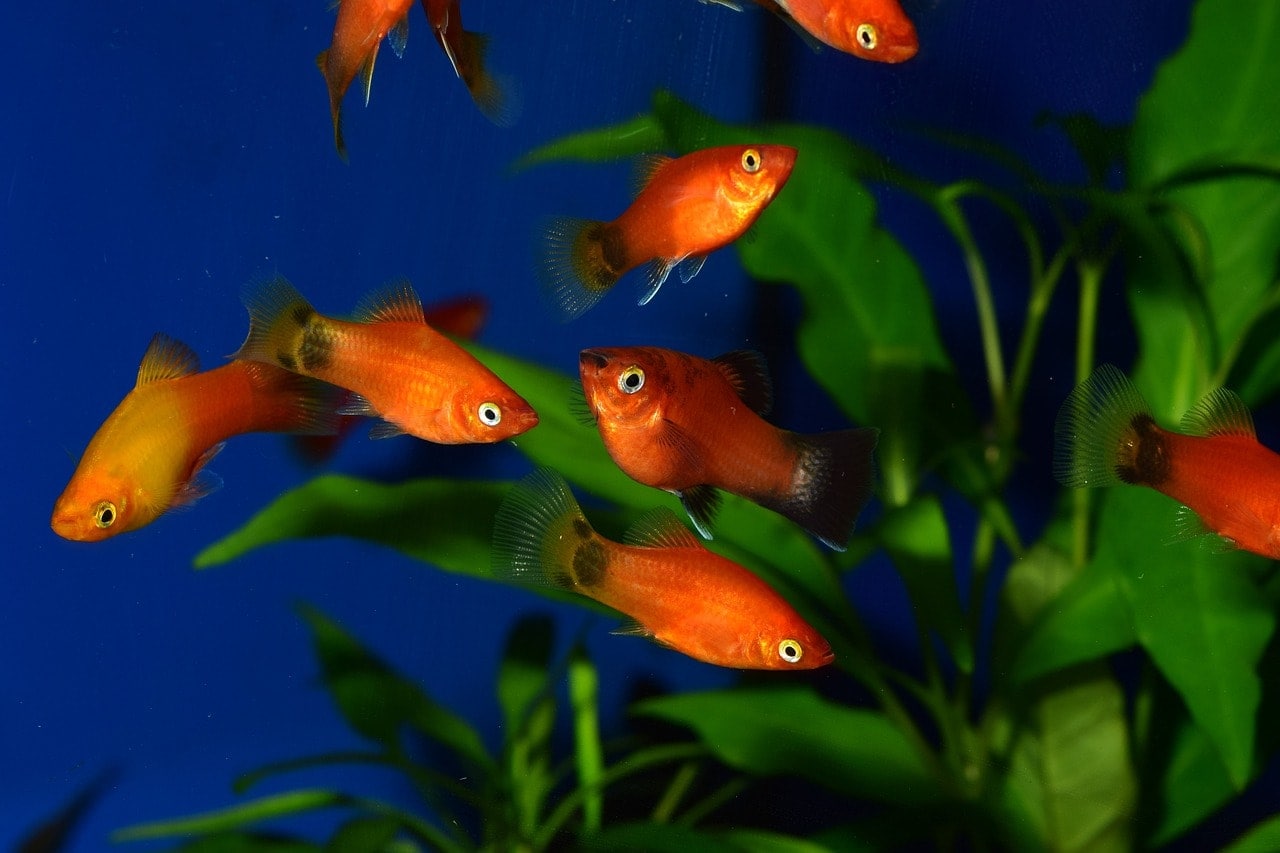
Relatives of Guppies and Mollies, Platies are livebearers that are easy to keep happy. They are not picky with food and can survive in poor water quality. They are available in many fun varieties and colors, making them a nice option for children.
They need plant cover to ensure the survival of fry. Although Platies are technically sexually dimorphic, the differences in the sexes are very slight and can be difficult to identify.
5. Zebra Danios
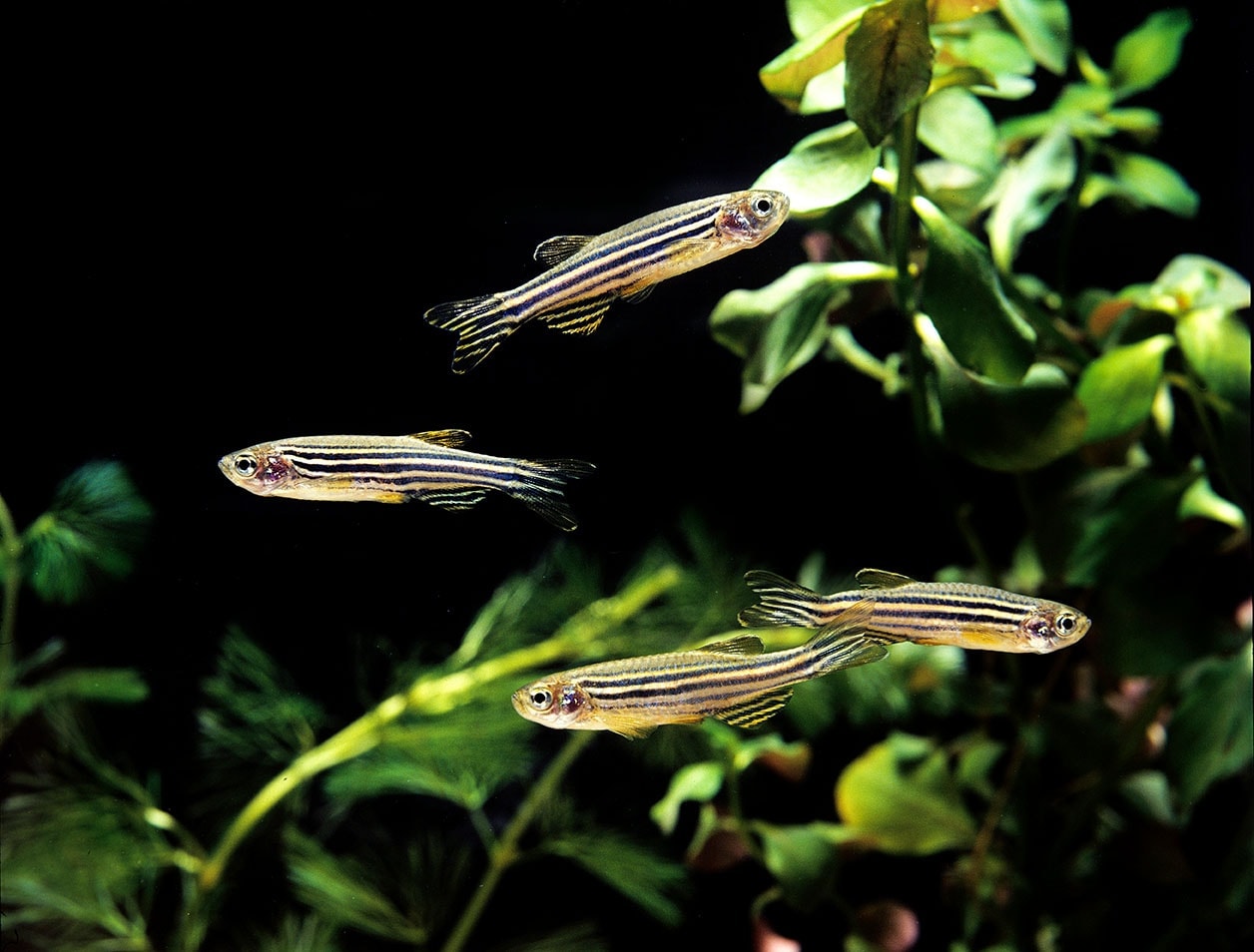
Zebra Danios are a cute, long-bodied type of fish that typically features horizontal stripes of black and silvery-blue down the body. They are also frequently sold in bright, interesting colors under the “Glofish” branding, and Zebra Danios also come in a long-finned variety.
These shoaling fish are easy to care for and can thrive in cooler water temperatures, which makes a heater not always necessary for their care. They are great for community tanks.
6. Otocinclus Catfish
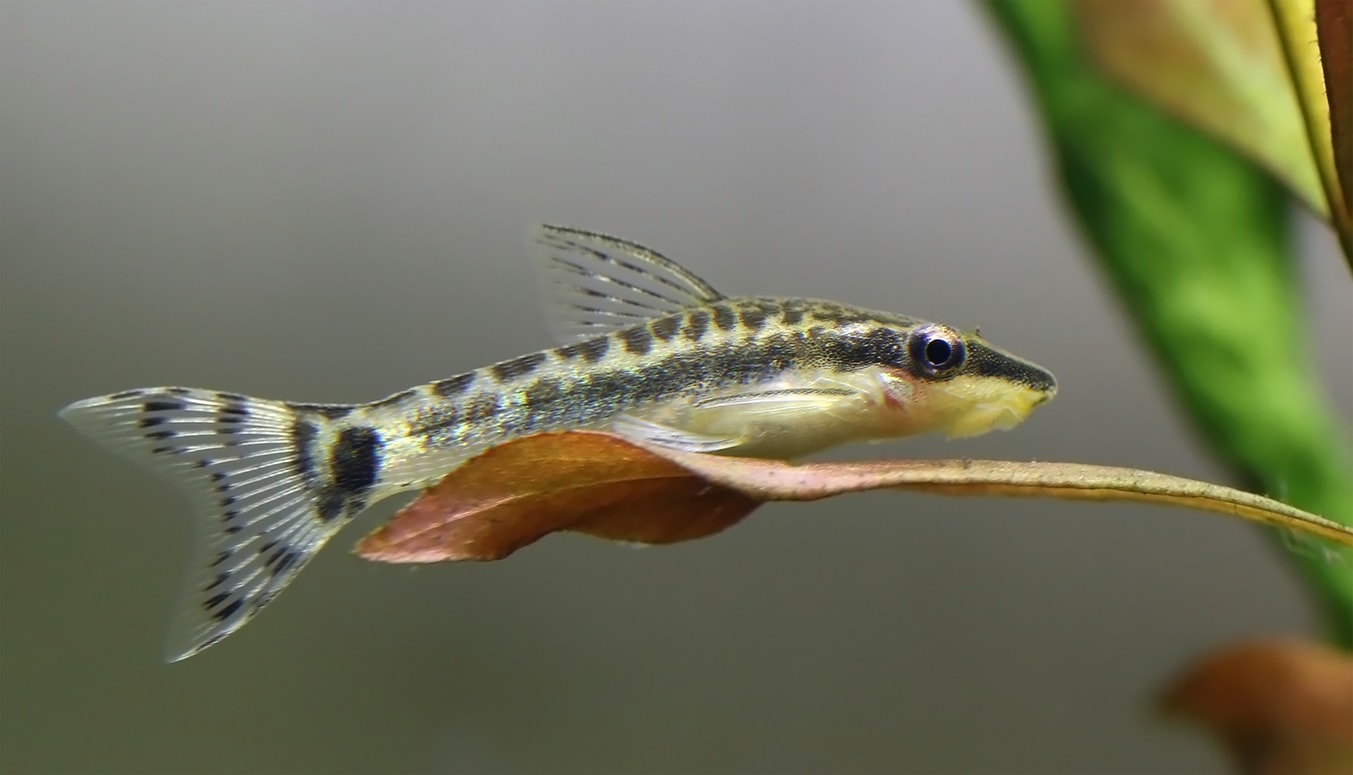
The Oto Catfish is a great pick for anyone looking for small algae-eating fish that will stay small. These tiny fish only reach around 1–2 inches in length, making them a good addition to small or large tanks.
They are shoaling fish, so they require groups of at least six to feel most comfortable and happy. Oto Catfish are very peaceful and can be somewhat shy.
7. Common Goldfish
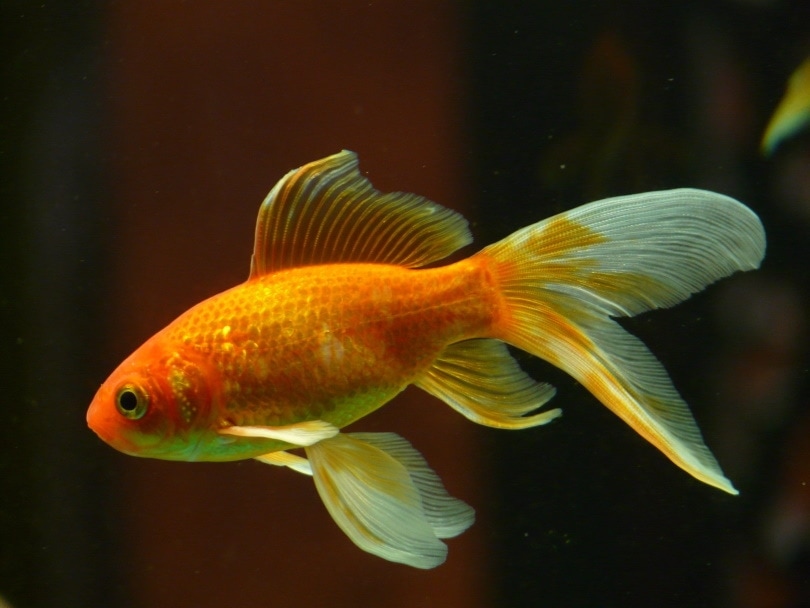
As the quintessential beginner fish, these fish are inexpensive to acquire and are often handed out as prizes at fairs and carnivals. Unfortunately, many people are not prepared for the care that Goldfish require.
While they are extremely hardy fish, they are big waste producers, and keeping their water clean can be more difficult than it is for most other fish on this list. They require high filtration to maintain water quality, but with proper care, common Goldfish can get large and live for decades. Like Bettas, Goldfish have a labyrinth organ.
8. Fancy Goldfish
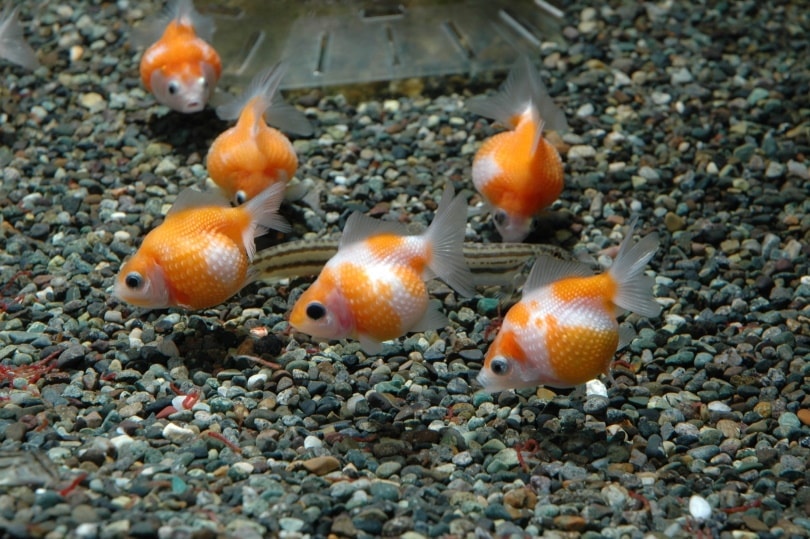
Fancy Goldfish are often more rounded and slower than common Goldfish. They come in several interesting shapes, sizes, and fin shapes, and sometimes they are available in interesting colors as well. They are often less hardy than common Goldfish, which can make their care slightly more difficult for beginners.
However, once established in a tank with good water quality, these fish tend to be active, social, and fun to watch. They usually do not get as large as common Goldfish but also live somewhat shorter lives.
9. Neon Tetras
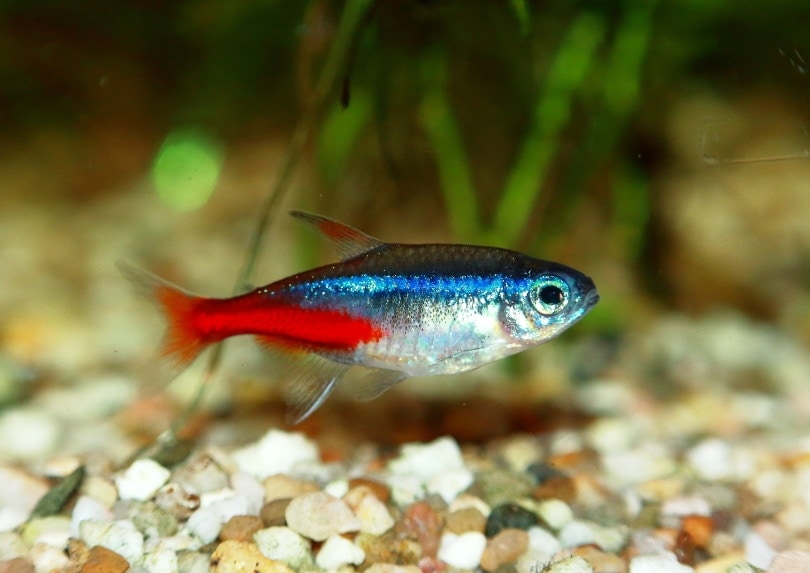
These tiny shoaling fish are one of the most recognizable in the aquatics trade. Their bright red and blue coloration makes them instantly identifiable. They typically stay under 1 inch in length, which can make them appropriate for some nano tank environments.
They are active and peaceful, making them fun additions to community tanks. They should be kept in groups of at least six fish to maintain their comfort and encourage them to be more active.
10. Black Skirt/White Skirt Tetras
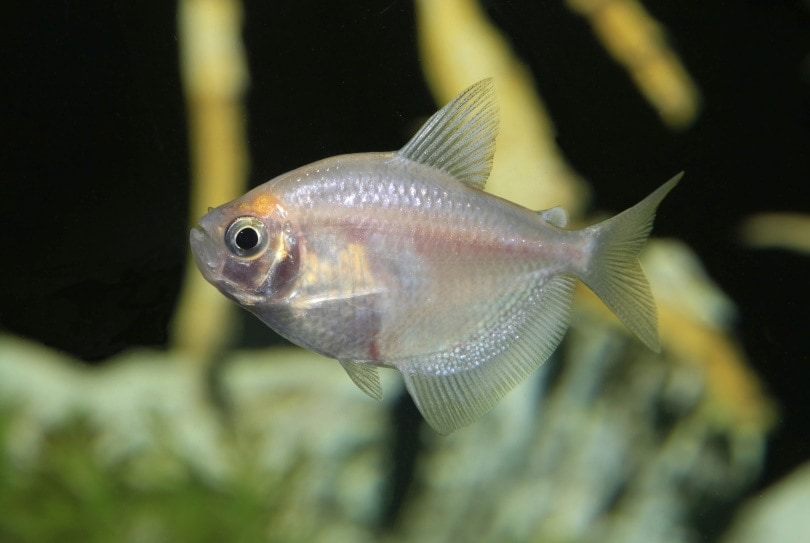
This larger variety of Tetra fish is a lovely addition to a community tank and is less common than its cousin, the Neon Tetra. These Tetras are available in the Black Skirt variety, which is primarily black, the White Skirt variety, which is primarily white to translucent, and the Blushing White Skirt variety, which features a white or translucent body and red “cheeks,” giving them the appearance of blushing.
They all have long, flowing fins and bodies that are taller than they are wide. These fish are peaceful and require shoals but have been known to shoal with other varieties of Tetras.
11. White Cloud Mountain Minnows
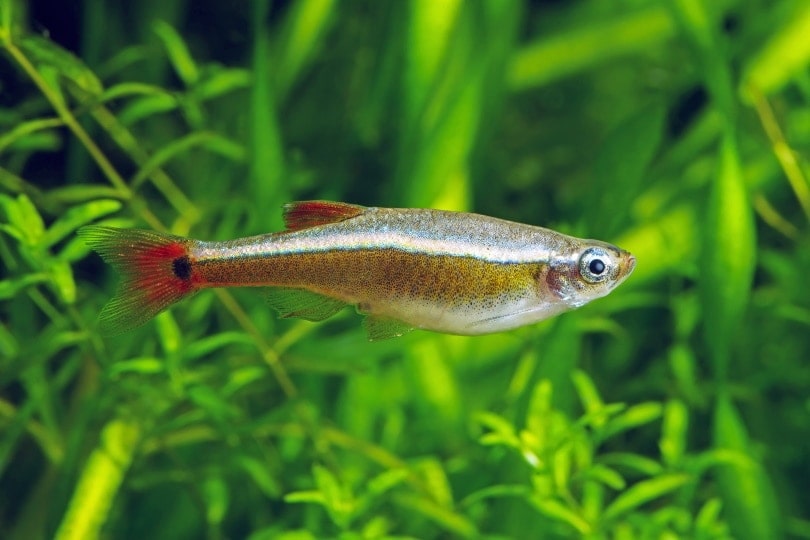
These small Goldfish cousins are similar in appearance to Neon Tetras but have different care needs. Like Goldfish, White Cloud Mountain Minnows prefer cool water environments and are hardy, even in poor water quality.
They can be kept with other fish of their kind, but they are not true shoaling fish, and if kept in larger groups, males may compete with each other for females. There is some sexual dimorphism in this species, but it is slight and difficult to identify.
12. Corydoras Catfish
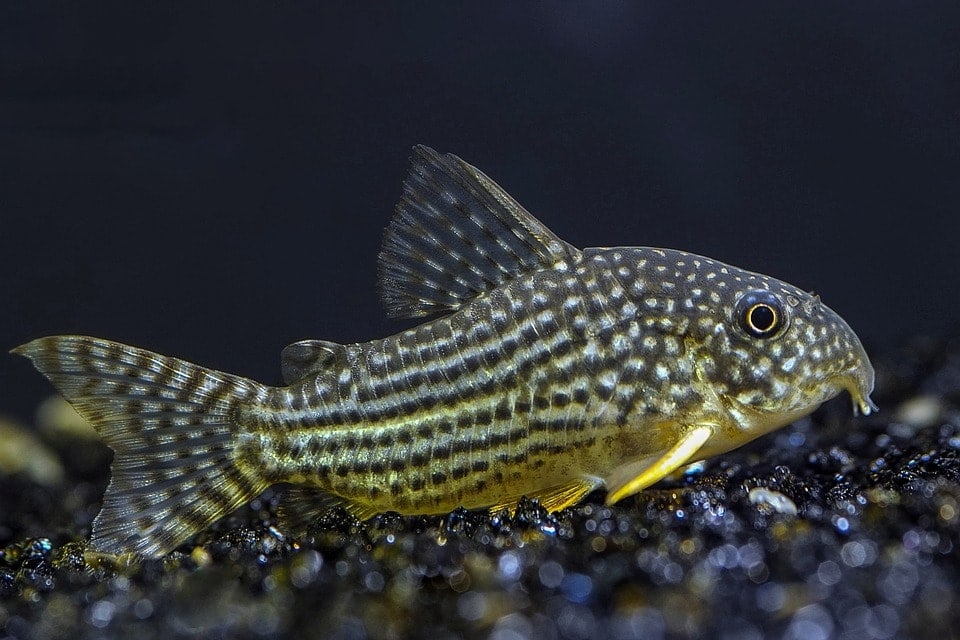
These cute Catfish only reach around 2.5 inches in length and prefer to be kept in groups. They will be happy with a partner but will become most active in larger groups. They are easy to care for and can survive low-oxygen environments.
They are not algae eaters but will help clean up the bottom of the tank, consuming leftover food and dead plant matter. Many people find that if they keep their Corys safe and happy, they will begin spawning.
13. Kuhli Loaches
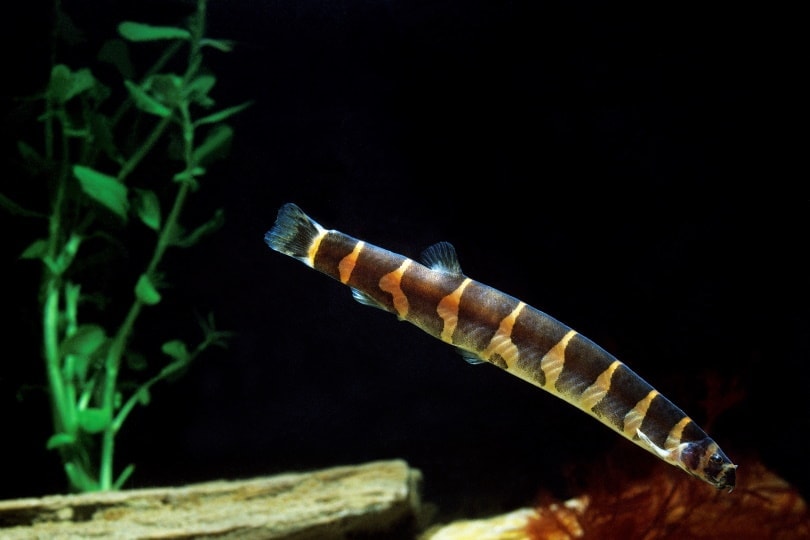
Kuhli Loaches are long, noodle-like fish that are not difficult to care for. Their striking yellow and black colors are beautiful, and their unusual body shape makes them entertaining to watch. They are very shy fish that are often sold as individuals, but they require at least a small group to thrive.
When kept in groups, Kuhli Loaches become very active and will often perform silly antics. They require a soft substrate that they can burrow in, and they are typically nocturnal, so avoid bright lighting.
14. Celestial Pearl Danios
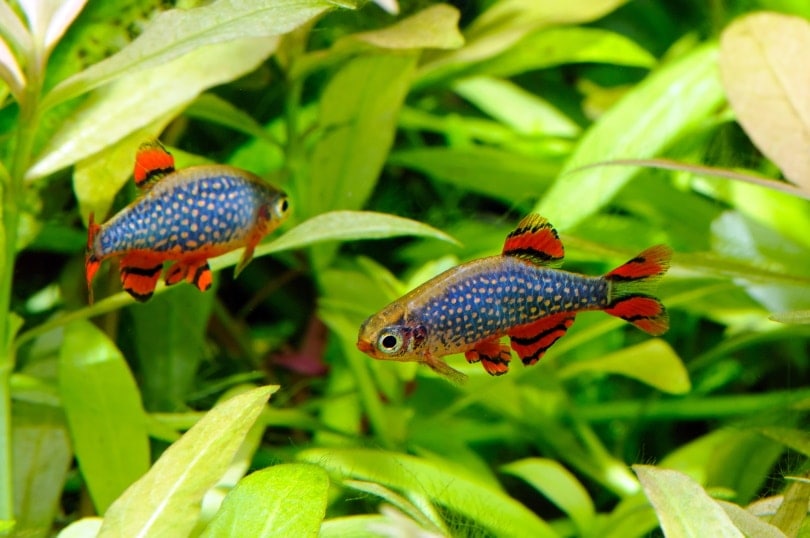
These beautiful fish have practically the same care needs as Zebra Danios. Celestial Pearl Danios feature eye-catching colors and speckles down the sides of the body. They are increasing in popularity quickly due to their beautiful colors and ease of care.
They are peaceful fish and can be kept in groups, but they are not true shoaling fish, so it isn’t necessary to keep a group of six or more like you would for most other Danios.
15. Cherry Barbs
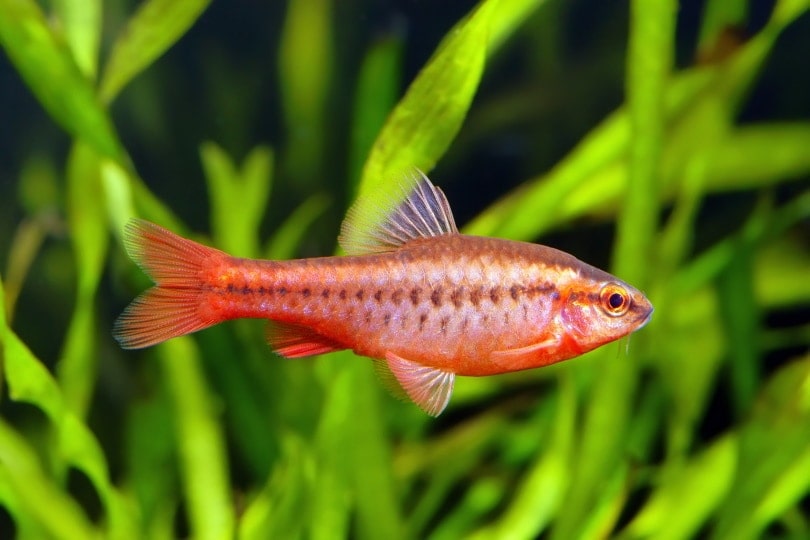
Barbs have a little bit of a bad rap because of their aggressive and territorial nature. However, Cherry Barbs are typically peaceful fish that some people even keep in community aquariums. They are shoaling fish and do need to be kept in groups to maintain their health and happiness.
Their bright red coloration makes them stand out in any tank, and the males tend to take on a more scarlet or crimson coloration when they are trying to attract a female for spawning.
In Conclusion
When it comes to picking low-maintenance fish for your first tank, you have plenty of great options! You can even mix and match some of the fish to create healthy, happy community tanks. Just ensure you do all your research on the needs and care of any fish before you bring it home.
This will help you avoid making the mistake of unintentionally shortening the life expectancy of your fish or increasing the risk of disease due to an inappropriate environment for them.
Read More:
- Common Goldfish: Vet-Approved Breed Facts & Care Tips
- Types of Betta Fish: Breeds, Patterns, Colors & Tails (With Pictures)
Featured Image Credit: Lasindu Nethmina, Shutterstock




